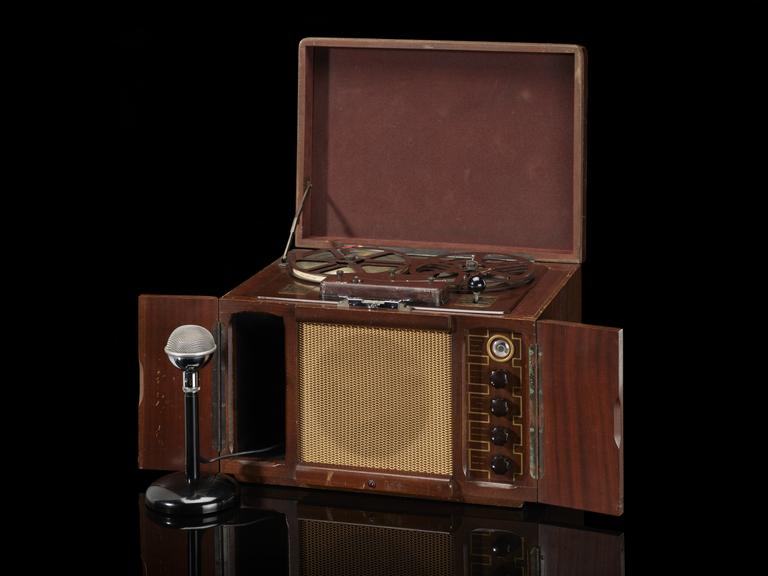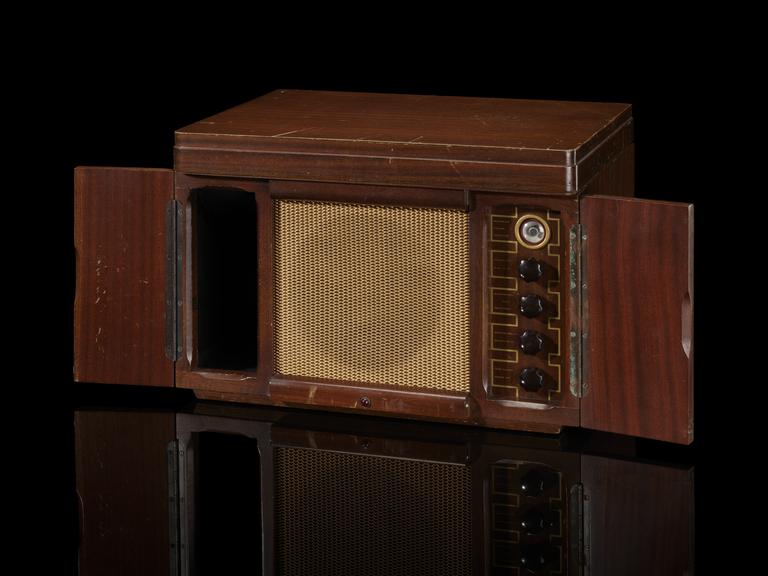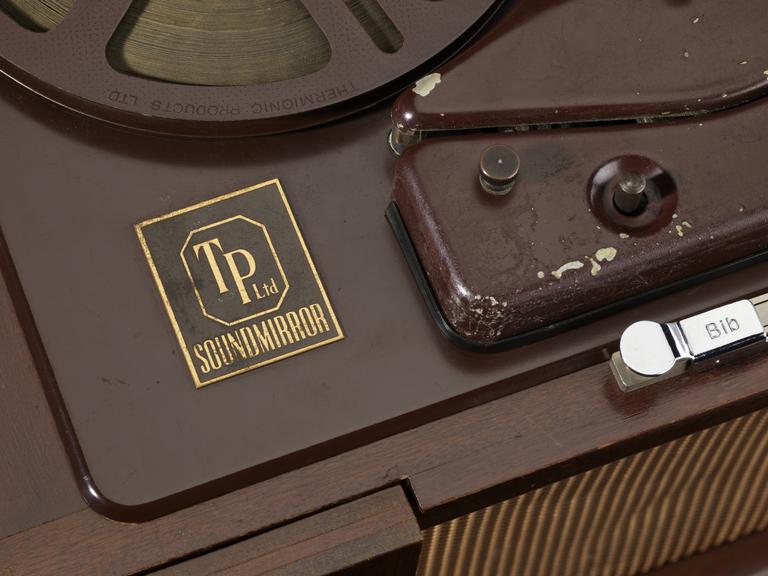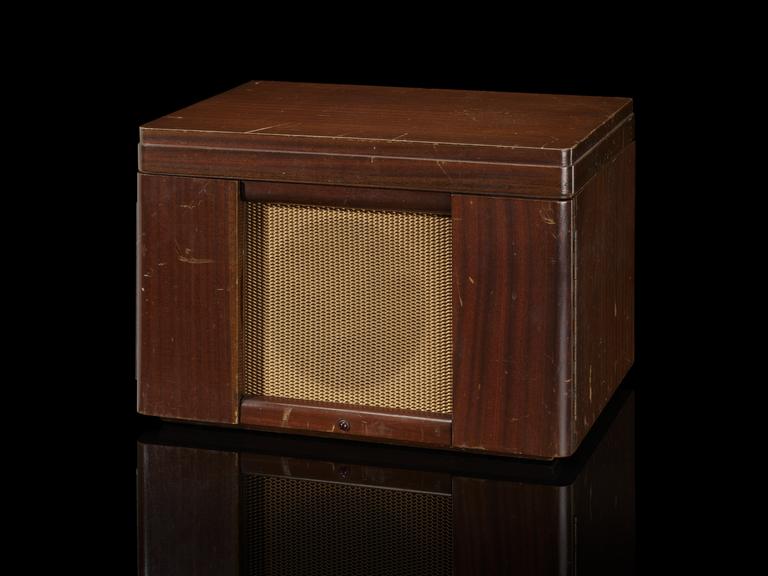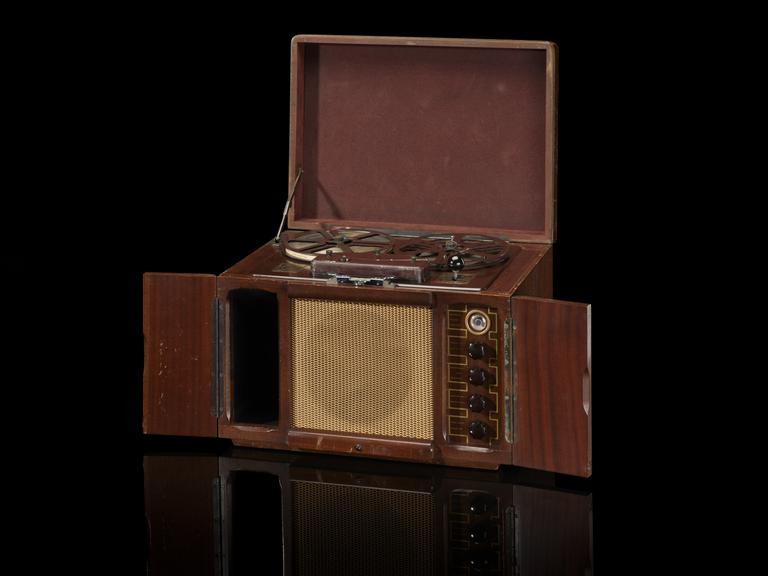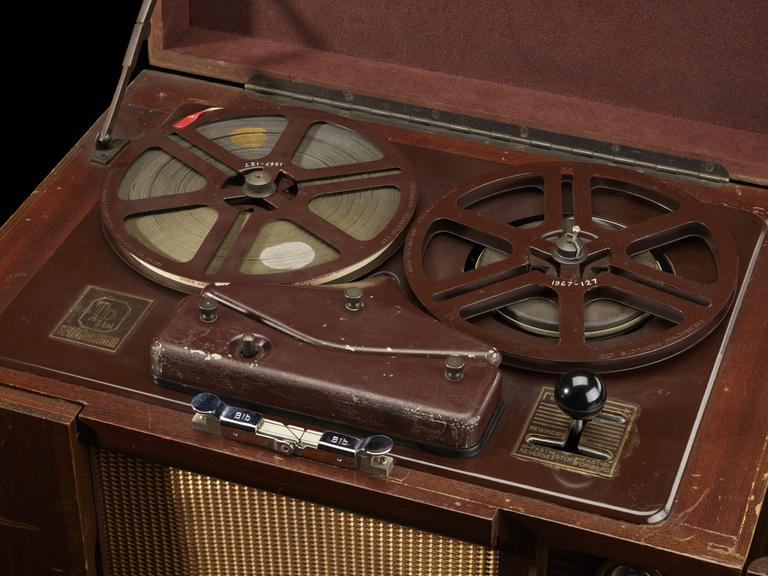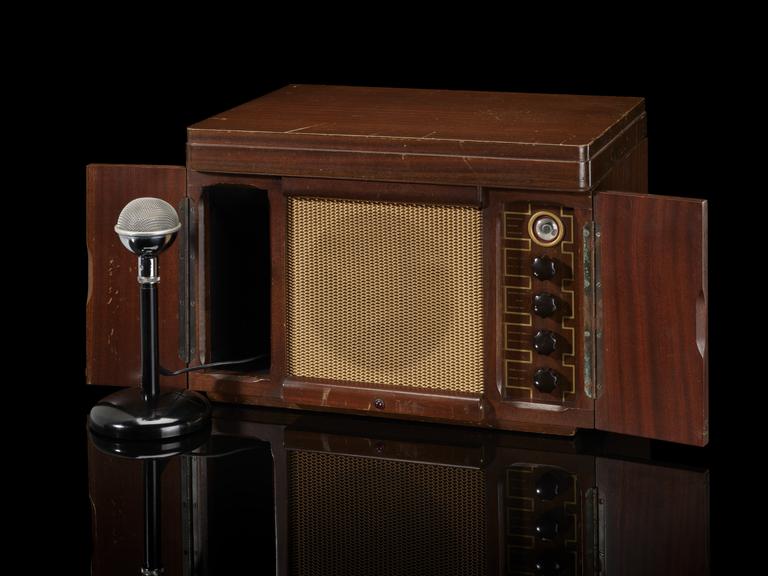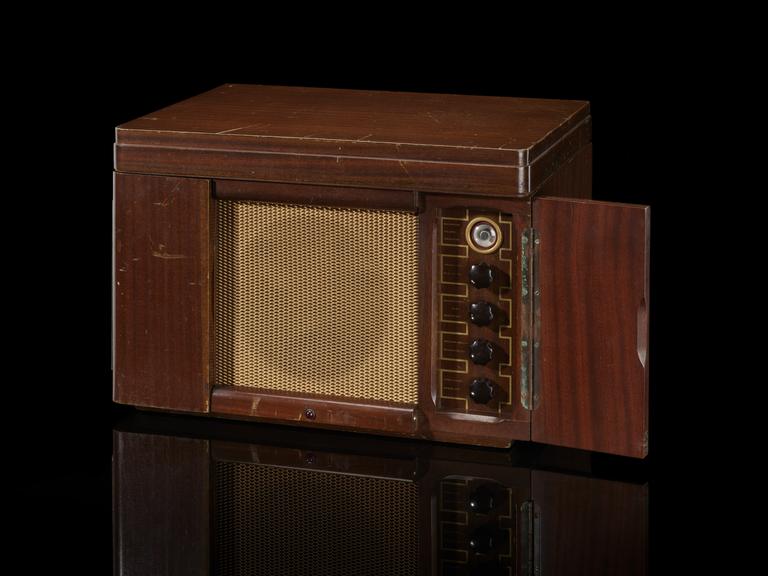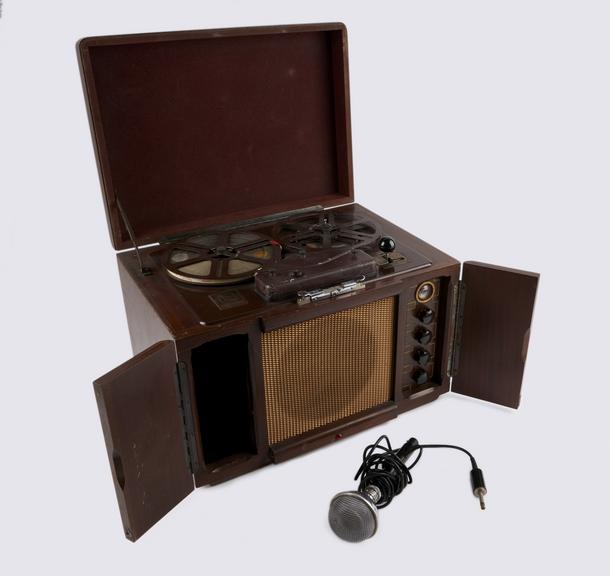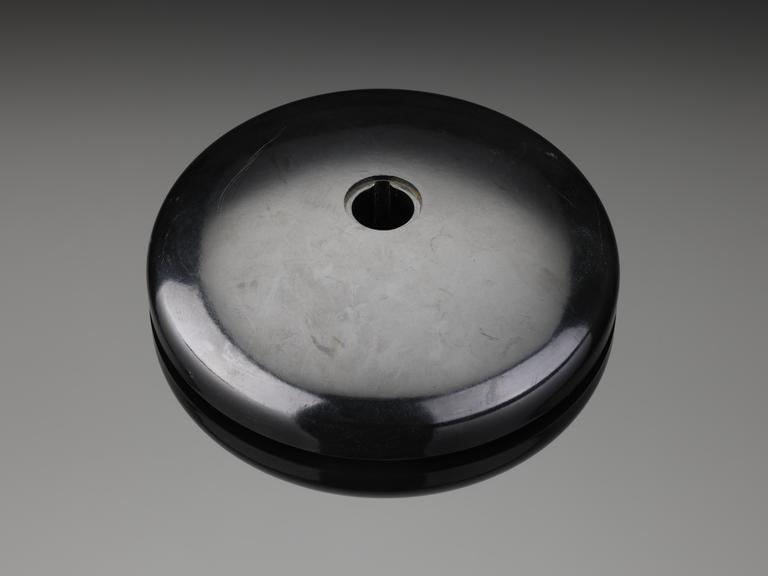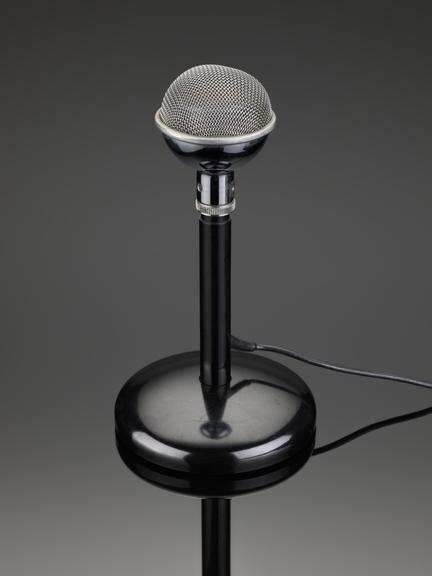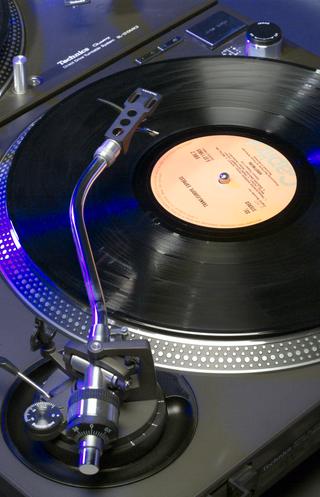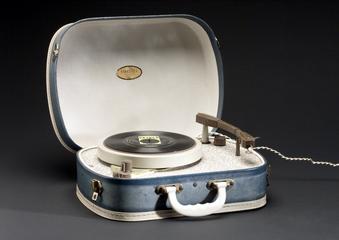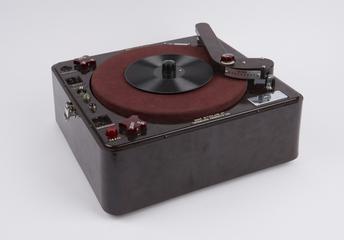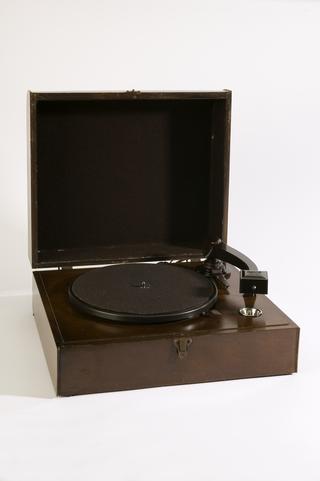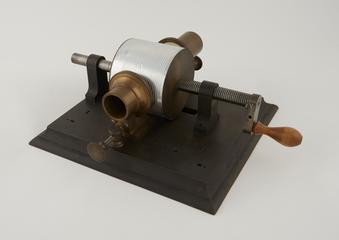Soundmirror tape recorder model TP 411, c.1950
Soundmirror Magnetic Recorder Tape, Thermionic Ltda., England, 1948.
More
This Soundmirror tape recorder was the first domestic tape recorder in the UK market. Made by Thermionic products Ltd. under the license of American-based Brush Development Company, the Soundmirror entered production in 1948 and it was a rebadged version of the Brush BK 411. The unit, made from a wooden cabinet and an integrated speaker, was a single-speed (7 ½ inches per second), full-track device. Due to its capacity to record 30 min sessions, it mainly aimed at the educational market (seminars, concerts, meetings, etc.) and followed the Recordon office dictation system also developed by Thermionic. Both the Recordon and the Soundmirror used a tape made from an oxide-coated paper called ‘magnetic ribbon’, which proved to be fragile (and was later replaced by plastic tape) but allowed users to edit the content by cutting and pasting the ribbon.
- Measurements:
-
overall: 300 mm x 450 mm x 325 mm,
- Materials:
- metal (unknown) , plastic (unidentified) and wood (unidentified)
- Object Number:
- 1967-127/1
- type:
- tape recorder
- Image ©
- The Board of Trustees of the Science Museum
